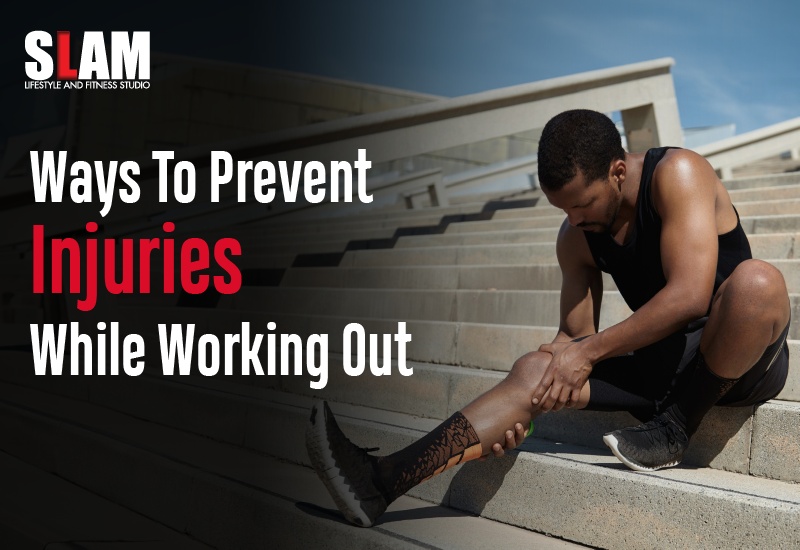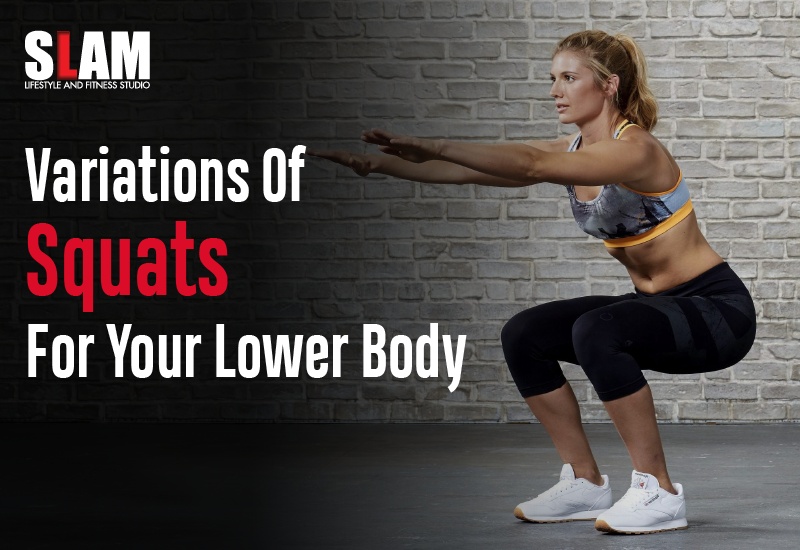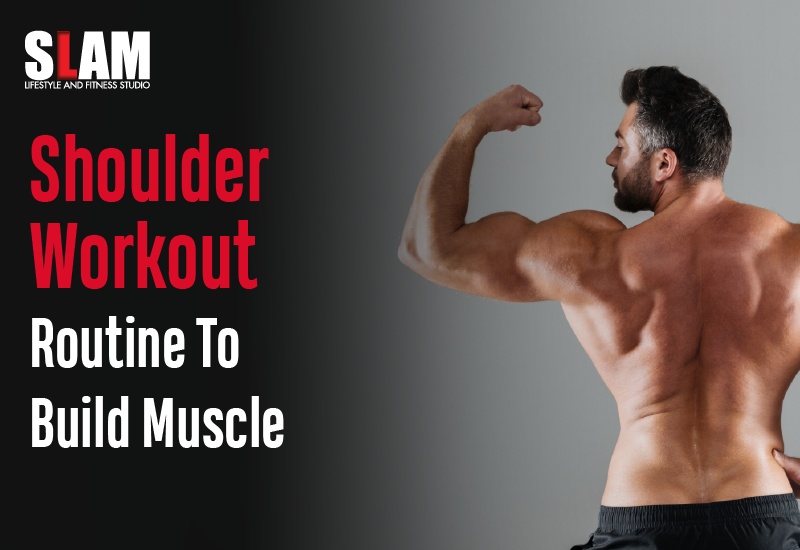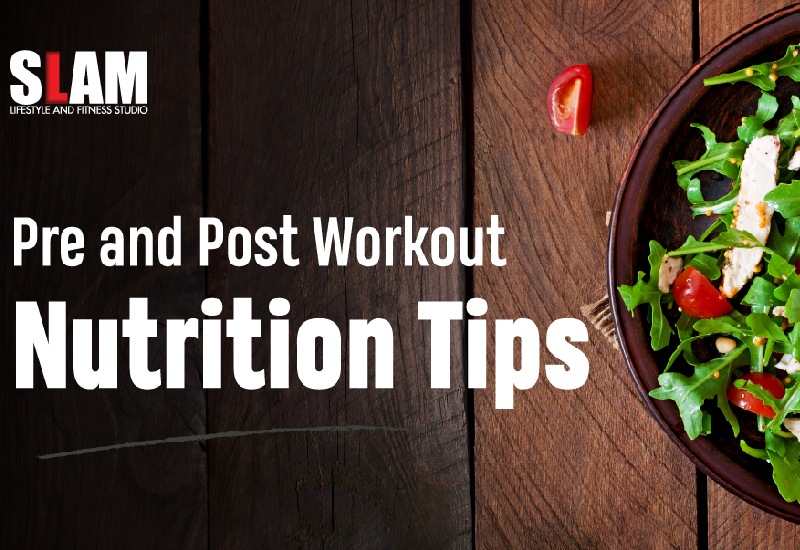Introduction
Exercise is a fantastic way to boost your physical and mental well-being. It strengthens your heart, improves your mood, and helps you maintain a healthy weight.
But let’s face it, pushing yourself to achieve your fitness goals can sometimes lead to unwanted consequences – injuries. The good news is, that many workout injuries are preventable!
This guide explores 9 practical strategies you can incorporate into your routine to minimise your risk of injury and keep your workouts productive and enjoyable – Here are some ways to prevent injuries.
By following these tips, you can train safely and effectively, maximise your results, and stay on track towards a healthier you.
Here are some ways to prevent injuries.
1. Warm Up Like a Champion: Prime Your Body for Peak Performance

Think of your body as a well-oiled machine. You wouldn’t crank the engine to full power without warming it up first, would you? The same principle applies to exercise.
A proper warm-up increases blood flow to your muscles improves flexibility, and prepares your body for exertion. Aim for 5-10 minutes of light cardio activity like jumping jacks, jogging in place, or dynamic stretches that mimic the movements of your workout.
- Benefits of a Warm-Up: Increased blood flow delivers oxygen and nutrients to your muscles, improving their performance and reducing the risk of strain. Improved flexibility allows for a wider range of motion in your exercises, further reducing injury risk. Additionally, a warm-up prepares your mind and body for the workout ahead, allowing you to focus and perform at your best.
2. Listen to Your Body (It’s Talking!): Become Your Own Injury Prevention System
Your body is your best built-in injury prevention system. Learn to recognise the difference between the good “burn” you feel from working a muscle and sharp pain that indicates something might be wrong.
Don’t push through pain! Reduce intensity, take a break, or modify the exercise if you experience discomfort. Pain is your body’s way of telling you to slow down or stop. Ignoring it can lead to serious injuries.
- The Importance of Body Awareness: Pay attention to how your body feels during and after exercise. Muscle soreness is normal, but sharp pain is not. Recognise your limitations, and don’t be afraid to scale back on intensity or weight if needed. Tuning into your body’s signals allows you to adjust your workout and prevent injuries before they occur.
3. Master Proper Form: Technique is King (or Queen!)
Using proper form during exercises is crucial to prevent injuries. Many gyms offer introductory classes or consultations with trainers who can teach you proper technique.
Also Check – How to Choose the right gym trainer for you
If you’re unsure about an exercise, don’t hesitate to ask for guidance. There are also many instructional videos online, but remember, nothing beats personalised instruction from a qualified trainer. Proper form ensures you’re targeting the intended muscle group and reduces stress on your joints.
- Benefits of Proper Form: Using proper form allows you to maximise the effectiveness of your exercises, leading to better results. More importantly, it reduces stress on your joints and muscles, preventing injuries and allowing you to train safely and consistently.
4. The Power of Gradual Progression: Slow and Steady Wins the Race
It’s tempting to jump right in and go all out, especially when you’re feeling motivated. However, increasing intensity or weight too quickly is a recipe for disaster.
Instead, adopt a gradual progression strategy. Start with lighter weights or lower repetitions and gradually increase them over time as your strength improves. This allows your muscles and joints to adapt to the demands of exercise and reduces the risk of overuse injuries.
- The Dangers of Overdoing It: Increasing intensity or weight too quickly puts undue stress on your muscles and joints, leading to potential injuries. Gradual progression allows your body to adapt to the increased demands of exercise, building strength and stamina safely and effectively.
5. Befriend the Mighty Rest Day: Give Your Body Time to Recharge
Rest and recovery are just as important as the workout itself. During rest days, your body repairs damaged tissues and rebuilds muscle strength. Aim for at least one rest day per week, and listen to your body for additional rest when needed. Feeling sore or fatigued? Take an extra rest day! Overtraining is a major cause of injuries.
- The Importance of Rest and Recovery: During rest days, your body undergoes muscle repair and growth. Without adequate rest, your muscles become fatigued and more susceptible to injury. Prioritising rest days allows your body to recover and come back stronger for your next workout.
6. Fuel Your Fitness Machine: Eat for Performance and Recovery
Your body needs proper fuel to perform at its best. Eat a balanced diet rich in fruits, vegetables, whole grains, and lean protein to provide your muscles with the nutrients they need to recover and grow stronger.
Don’t forget to stay hydrated throughout the day, especially before, during, and after your workout. Dehydration can lead to muscle cramps and fatigue, increasing your risk of injury.
- Nutritional Needs for Exercise: A balanced diet provides your body with the essential building blocks for muscle repair and growth. Carbohydrates provide energy for your workout, while protein helps rebuild muscle tissue. Healthy fats also play a role in hormone regulation and cell function. Staying hydrated ensures proper blood flow and muscle function, reducing the risk of cramps and fatigue.
7. Listen to Your Limits: Know When to Push and When to Ease Up
We all have limitations, and that’s okay! Don’t try to lift weights that are too heavy or push yourself beyond your current fitness level. There’s no shame in modifying exercises or taking breaks.
It’s always better to be safe than sorry. Trying to lift weights that are too heavy or performing exercises with improper form are major risk factors for injury.
- Respecting Your Limits: Pushing yourself outside your comfort zone can be beneficial for growth, but there’s a difference between challenging yourself and pushing yourself to the point of injury. Listen to your body’s signals and adjust your workout accordingly. This allows you to train safely and consistently, leading to long-term progress.
8. Invest in Supportive Gear: Dress for Success (and Safety)
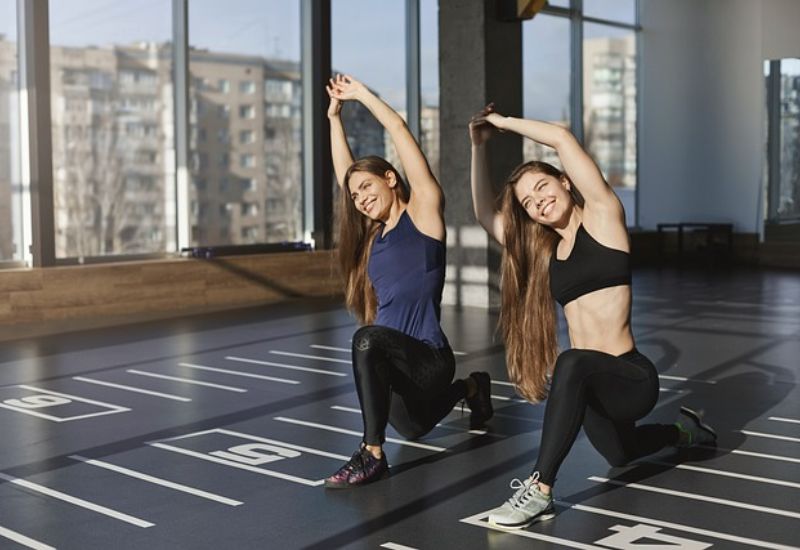
Proper footwear is essential for preventing injuries. Choose shoes designed for your specific activity, whether it’s running, lifting weights, or cross-training.
Supportive shoes provide proper cushioning and stability, reducing stress on your joints. Consider using additional supportive gear like wrist wraps for exercises that put stress on your wrists or a weightlifting belt for heavy squats.
- The Role of Proper Gear: Supportive footwear and gear can make a big difference in preventing injuries. Shoes designed for your activity provide proper cushioning and stability, while additional gear like wrist wraps or a weightlifting belt can offer extra support for specific exercises. Investing in the right gear helps you train safely and effectively.
9. Stretch It Out: Improve Flexibility and Reduce Muscle Soreness
Cooling down with static stretches after your workout helps to improve flexibility, prevent muscle soreness, and maintain a healthy range of motion in your joints. Hold each stretch for 15-30 seconds and focus on deep, controlled breathing.
Regular stretching improves your flexibility, allowing for a wider range of motion in your exercises, which can help prevent injuries.
- Benefits of Stretching: Stretching after your workout helps to elongate shortened muscles, reducing post-workout soreness and stiffness. Improved flexibility also allows for a wider range of motion in your exercises, leading to better performance and a lower risk of injury.
SLAM Fitness

SLAM Fitness Studio in Chennai is your go-to destination for holistic health and fitness solutions. The studio specialises in a variety of training services tailored to meet individual fitness goals, whether you’re a beginner or an experienced athlete.
Their offerings include high-intensity interval training (HIIT), strength and conditioning programs, yoga sessions, and personalised fitness plans. The trainers are certified and passionate, providing motivational support and expert guidance to ensure you achieve optimal results.
Additionally, SLAM Fitness offers nutritional advice to complement your workout regime, emphasising a well-rounded approach to health and wellness.
The welcoming atmosphere and community-oriented environment make it a perfect place to start or continue your fitness journey, encouraging consistency and dedication in a supportive setting.
Conclusion
By incorporating these 9 simple yet powerful strategies into your exercise routine, you can significantly reduce your risk of injuries and keep your workouts productive and enjoyable. Remember, consistency is key.
The more you prioritise injury prevention, the stronger and healthier you’ll become on your fitness journey. Now go forth, conquer your workouts, and achieve your fitness goals – all while staying safe and injury-free!
FAQs
- What are the most important steps to take before beginning a workout to prevent injuries?
Before starting a workout, it’s crucial to perform a proper warm-up to prepare your muscles and joints. Spend at least 5-10 minutes on light aerobic activity, such as jogging or cycling at a low intensity. Follow this with dynamic stretches—like leg swings and arm circles—that mimic the movements of your workout.
- How can I ensure that my workout routine doesn’t lead to injuries?
To keep your routine safe, it’s vital to focus on technique and form over speed or intensity. Start with lighter weights or lower intensity and increase gradually as you gain strength and confidence. Additionally, make sure to include a variety of exercises in your regimen to avoid overuse injuries, which can occur from repetitive strain on the same muscles and joints.
- What role does equipment play in preventing workout injuries?
Using the right equipment is essential for injury prevention. This includes selecting the correct shoes for your activity, which should provide appropriate support and cushioning. Also, ensure any workout machinery is adjusted to fit your height and strength capabilities. Properly maintained equipment reduces the risk of accidents and the strain that can lead to injuries.
- How often should I rest to prevent workout injuries?
Rest is a key component of any exercise program. Muscles need time to repair and strengthen, so include rest days in your schedule. For most people, one or two rest days per week are sufficient, depending on the intensity and frequency of their workouts. Listen to your body—if you’re feeling unusually tired or sore, additional rest may be necessary.
- What should I do if I start feeling pain during a workout?
If you experience pain during exercise, stop immediately and assess the severity. Mild discomfort, like muscle fatigue, is normal, but sharp, persistent, or sudden pain is a sign of potential injury. Applying ice to the affected area can help reduce inflammation. If the pain persists, it’s wise to consult a healthcare professional before resuming your workout to avoid further injury.
